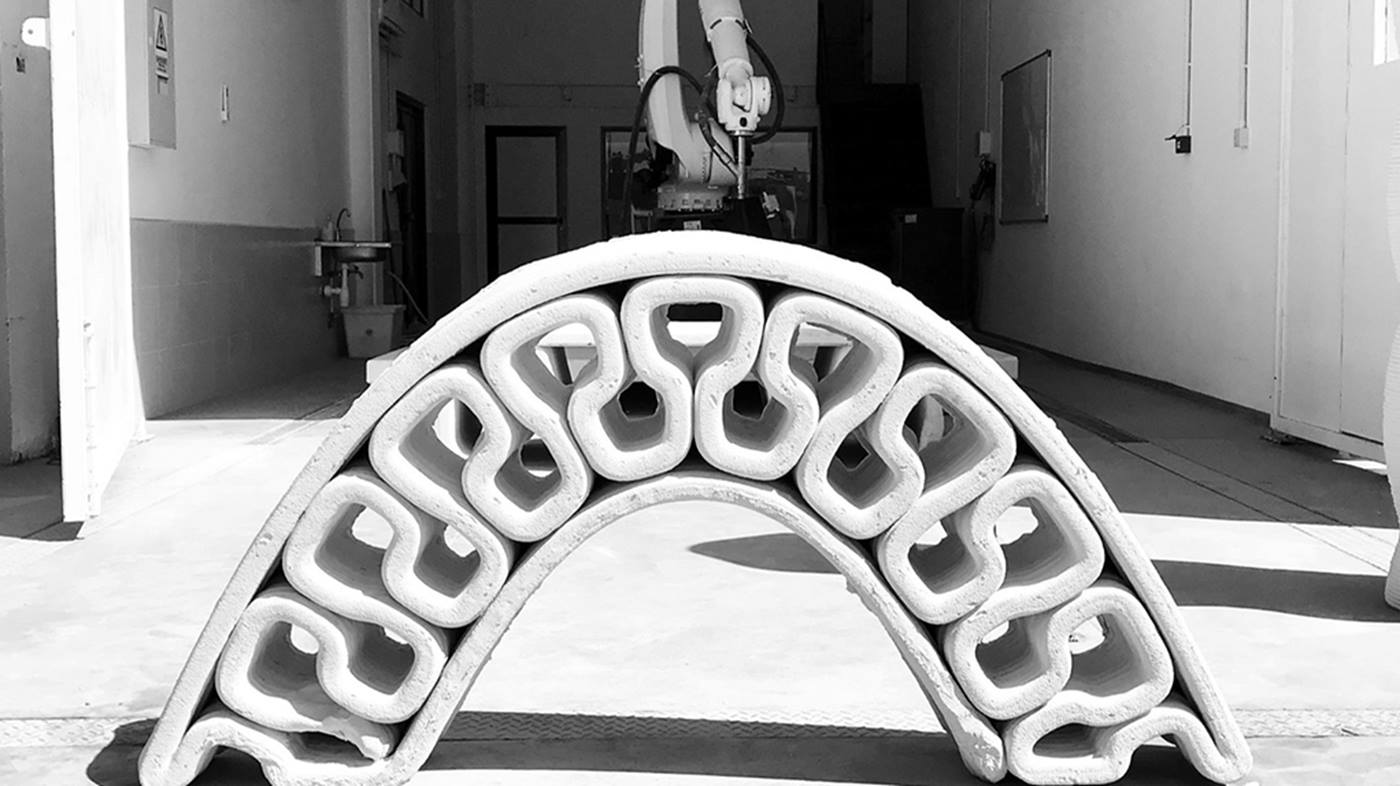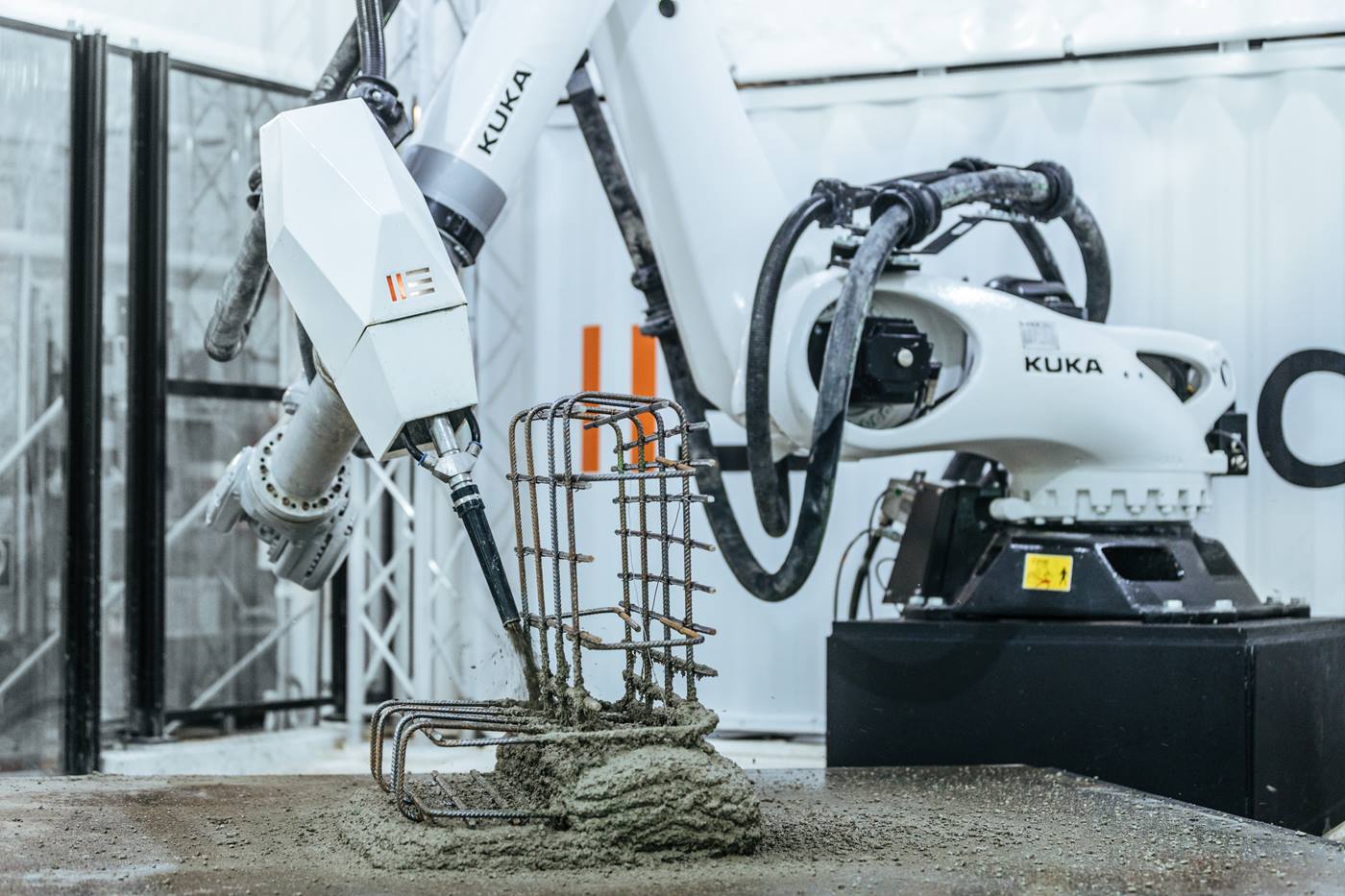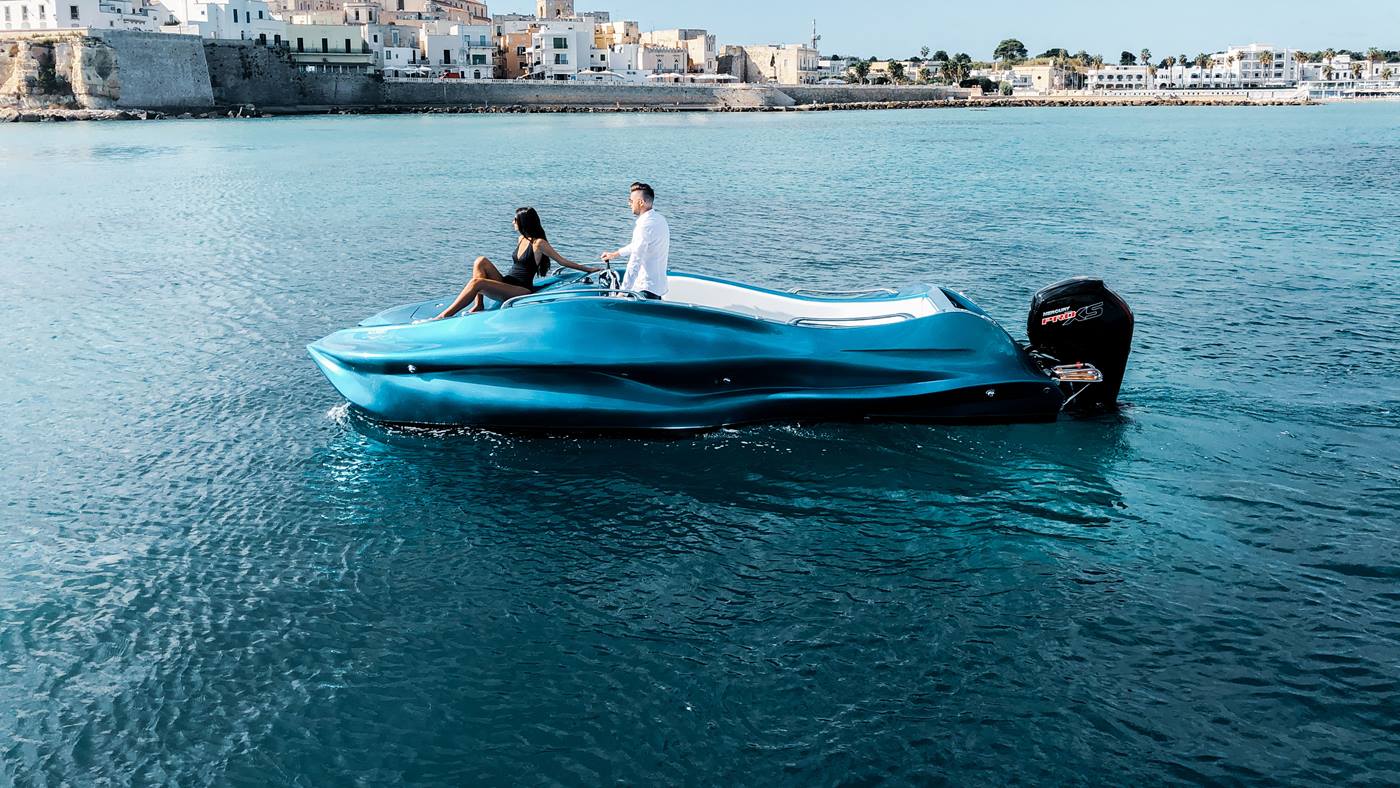3D printing for facades: individual solutions in a few hours
290 concrete panels form the facade of the BESIX 3D studio in Dubai, part of the Belgian BESIX Group. 290 panels, each of which was printed in around ten minutes with the aid of a KUKA robot and then simply mounted on the building on site. It was the construction group’s first groundbreaking project and is currently considered the largest 3D-printed concrete facade in the world.










